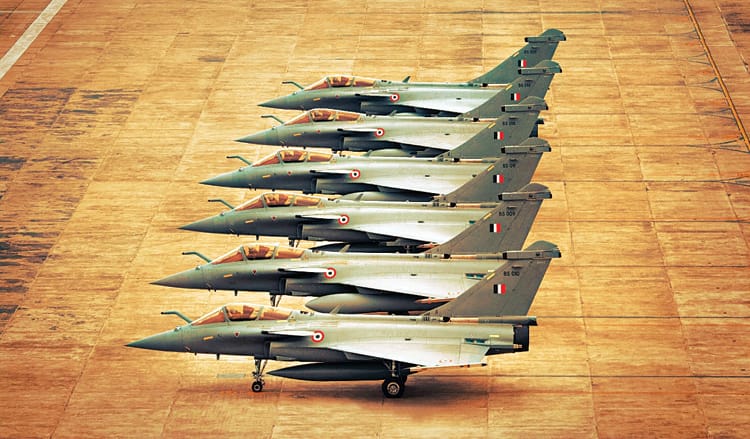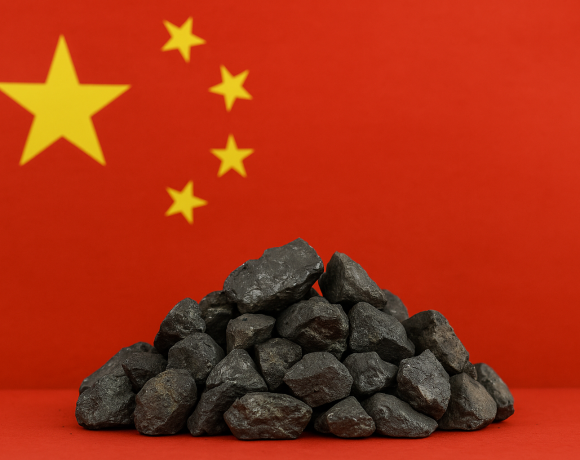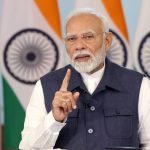
Grounded by Silence: How India’s Information Vacuum Hurt Dassault
Operation Sindoor was supposed to be a defining moment for Indian airpower. With deep-penetration strikes, the use of BrahMos cruise missiles, and long-range drones evading Pakistani air defences, the mission was a resounding tactical success.
Among the many aircraft involved, the French-built Rafale fighter jet was presumed to have played a key role, striking targets deep inside Pakistani territory and returning unscathed. It should have been a PR triumph not just for India, but for Dassault Aviation—the French manufacturer whose multi-billion-dollar fighter jet had finally seen action in South Asia’s most volatile theatre. Instead, what followed was a communications disaster.
As Pakistan launched an aggressive disinformation campaign claiming the downing of Rafales, and China allegedly joined in with AI-generated propaganda, India chose to remain silent. And that silence left Dassault exposed, unable to defend its product in global arms markets, caught between client confidentiality and diplomatic helplessness.
The Rafale Whisper Campaign: Origins of the Misinformation
In the days following Operation Sindoor, Pakistan’s military wasted no time in crafting a narrative of triumph. According to them, five Indian jets had been shot down, including three Rafales. Within hours, doctored videos, AI-generated images of downed jets, and dramatic news tickers filled Pakistani media and social networks. What made this more dangerous than usual was the level of sophistication. The images included realistic tail sections, numbered “BS001,” and scorched fuselage textures consistent with real Rafale parts. None of them were verifiable.
What added fuel to the fire was a concurrent report by the Associated Press, citing French intelligence sources, that China had mobilized its embassies across Asia to discredit the Rafale. Defense attachés held closed-door meetings in countries like Indonesia—where Rafale deals are in progress—urging officials to reconsider. At the same time, social media accounts traced to bot networks, many AI-generated, began spreading fake imagery and narratives supporting Pakistan’s claims. The campaign, it seems, wasn’t just about winning the last war. It was about sabotaging Rafale’s future.
India’s Deafening Silence: Strategic or Self-Sabotaging?
While Pakistan and China flooded the information space with noise, India opted for silence. Officially, the Indian government admitted that some aircraft were lost during Operation Sindoor but deliberately refrained from specifying which ones. The rationale, presumably, was rooted in operational secrecy. But in an era where perception shapes policy, this silence was quickly weaponized by adversaries.
The Press Information Bureau’s fact-check division did eventually publish a rebuttal to Pakistani claims, calling the reports fabricated and misleading. Yet, the damage had already been done. The statement was dry, bureaucratic, and lacked visual or technical clarity. It didn’t carry the weight or authority to decisively counter the AI-generated images and viral propaganda videos that had already taken over the narrative.
In fact, the vacuum created by India’s muted approach ended up validating Pakistan’s story in the minds of many neutral observers. Global defense outlets, eager for hard evidence, were left to speculate. When Dassault said Pakistan’s claims were inaccurate, there was nothing from India to back that denial. The country with the most at stake, the one fielding Rafales in battle, had effectively abandoned the information battlefield.
Dassault Caught in the Middle: No Room to Defend
For Dassault Aviation, Operation Sindoor should have been a golden opportunity. Their flagship multirole fighter had, by all accounts, performed impressively in hostile airspace. The Rafale had finally moved from theoretical superiority to real-world combat use. In the world of defense exports, that kind of validation is priceless. But instead of leveraging that moment, Dassault found itself unable to speak freely—because its primary customer, the Indian government, refused to provide details or even basic confirmations.
Dassault CEO Éric Trappier did issue a statement calling the Pakistani claims “factually incorrect,” but beyond that, the company’s hands were tied. Any direct engagement with the narrative—be it through publishing sortie data, pilot debriefs, or footage—would have required India’s consent. That consent never came. Dassault couldn’t even confirm whether Rafales were part of the aircraft India admitted losing. The risk of breaching client confidentiality in the highly sensitive defense sector meant Dassault was forced to watch its reputation get questioned without the tools to fight back.
This wasn’t just a PR issue. For a company competing in the crowded and politically fraught arms market—where U.S., Russian, and Chinese alternatives constantly jostle for influence—credibility is critical. A few well-placed rumors, when left unchallenged, can tip billion-dollar deals. With India choosing silence and France staying diplomatically restrained, Dassault was left stranded. The only party aggressively defending Rafale’s honor turned out to be a handful of independent defense analysts—hardly a substitute for state-backed reassurance.
The Export Fallout: When Silence Costs Real Money
Dassault’s Rafale program has long been a cornerstone of France’s defense export strategy. With over 400 aircraft delivered or on order and billions in future deals pending across Asia, the Middle East, and Africa, the stakes couldn’t be higher. And just when Operation Sindoor should have boosted Rafale’s profile, the surrounding confusion cast an unnecessary shadow over its credibility.
In Southeast Asia, Indonesia had signed a deal to acquire 42 Rafales, but the contract’s execution is still unfolding in phases. Malaysia, long seen as a potential customer, has kept its options open between Western and Chinese platforms. Across these theaters, China’s campaign sought to exploit uncertainty by planting doubt about Rafale’s actual battlefield survivability. That doubt, while unfounded, was made plausible by India’s refusal to publicly clarify what happened.
In the Middle East, where UAE’s Rafale order is already in progress, buyers are less susceptible to influence campaigns—but the global defense industry is tightly networked. Unverified losses, even if only hinted at, can affect negotiations, delivery schedules, and future customizations. Dassault now finds itself fielding tough questions behind closed doors not because of any failure in the jet’s design or performance, but because the country flying it won’t say whether or not it was even involved in the supposed losses.
In this silence, China saw an opening—not just to sabotage Rafale’s sales, but to insert its own offerings like the J-10CE or FC-31 as alternatives in emerging markets. And it wasn’t subtle. Reports of Chinese defense attachés directly lobbying Asian governments, combined with social media amplification of false narratives, formed a coordinated push to capitalize on India’s communications void. For Dassault, the consequence is clear: a product proven in combat could not speak for itself, and its only real ally—India—chose not to speak at all.
Why India’s Silence Backfired
India may have believed that keeping quiet was the more mature or strategically prudent course. Historically, the Indian establishment has preferred understatement over bluster when it comes to military engagements. But in today’s information-saturated, AI-amplified world, that approach is not just outdated—it is counterproductive. Strategic ambiguity only works when it is paired with narrative control. In the absence of that control, ambiguity turns into vulnerability.
By refusing to clarify whether Rafales were involved in any losses, India ceded the narrative battlefield to its adversaries. The vacuum allowed Pakistan’s exaggerated claims to thrive and China’s coordinated information warfare to find traction in neutral circles. Worse, it left a trusted foreign partner, Dassault, unable to protect its global reputation. In the defense business, perception matters as much as performance. And India’s refusal to offer even limited clarification undermined the combat credibility of the very aircraft it had bet billions on.
The repercussions go beyond arms deals. India is trying to position itself as a leader in the Global South, a credible defense exporter in its own right, and a major strategic partner in the Indo-Pacific. But how credible is a partner that cannot—or will not—publicly defend its operational victories or its imported hardware from slander? In failing to respond, India also risks weakening its own defense diplomacy. Other manufacturers may hesitate before investing reputational capital in India’s defense stories if those stories are later buried in silence.
The Lessons: What India Must Do Next
Operation Sindoor revealed not just India’s strike capabilities but also the glaring gaps in its information warfare readiness. If India wishes to be taken seriously as a modern military and geopolitical force, it must invest in more than just missiles and machines. It needs a credible, agile, and globally aware strategic communications architecture—one that can counter disinformation in real-time, defend allies and OEMs, and shape global perception with facts, not silence.
The Indian Armed Forces, especially the Air Force and the Ministry of Defence, need to establish a permanent, empowered public affairs directorate—akin to the Pentagon’s DoD Media Hub or Israel’s IDF Spokesperson Unit. These bodies do more than issue press releases; they engage the media, release carefully curated battlefield imagery, and proactively shape the narrative to support national interests. India has the technical tools, OSINT capabilities, and satellite assets—it simply lacks a doctrine for information control during live operations.
Next, India must understand that defense diplomacy is not just about bilateral visits and MoUs, but about narrative consistency. When your strategic partner’s aircraft performs in battle, defending its image is not charity—it’s reciprocity. Dassault, having invested decades into Rafale’s brand, could have pushed back harder against disinformation—but without India’s operational data, their hands were tied. If India expects loyalty from its suppliers and partners, it must learn to offer cover when the reputational stakes are high.
Lastly, India must begin reframing military silence not as stoicism, but as strategic risk. The era of state-controlled messaging is over. The next generation of disinformation will come in the form of photorealistic AI-generated videos, forged satellite imagery, and deepfakes indistinguishable from reality. The only antidote is a fast, credible, and transparent counter-narrative—and that requires preparation, policy, and political will.
Conclusion: Rafale Wasn’t Grounded — India’s Voice Was
There is no credible evidence that a Rafale was shot down in Operation Sindoor. What was shot down, with precision and coordination, was the narrative — by Pakistan’s propaganda machinery and China’s digital warfare network. India, despite holding the truth and the operational upper hand, refused to fire back in the information domain. And in doing so, it inadvertently allowed one of its most prestigious defense acquisitions to be tarnished in the global eye.
Dassault’s Rafale deserved better — not because it needed saving, but because it earned the right to be defended. Its silence was understandable. France plays by the rules. But India’s silence was inexcusable. It had the facts. It had the battlefield success. What it lacked was the willingness to shape the story.
If India wishes to be a major defense power, it must understand that perception warfare is not beneath it — it is part of the battlefield. You can’t aim for leadership while outsourcing your voice. You can’t champion Atmanirbharta and strategic autonomy while leaving your foreign partners to take the hits for your silence. And you certainly can’t celebrate a successful air operation without defending the very aircraft that made it possible.
Because in the end, Rafale wasn’t grounded. But India’s voice was. And that may prove far more costly than any hypothetical jet loss.

















